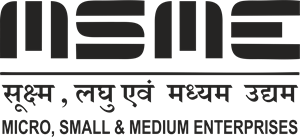PCIe Trends: Peripheral Component Interconnect Express (PCI Express), often known as PCIe or PCI-e, is a high-speed serial computer expansion bus standard that was developed to replace the role of the older PCI, PCI-X, and AGP bus standards.
It is a common motherboard interface for hardware connections to personal computers’ graphics cards, sound cards, hard disk drive host adapters, SSDs, Wi-Fi, and Ethernet.
Better performance scaling for bus devices, a more thorough error detection and reporting mechanism (Advanced Error Reporting, AER), and native hot-swap functionality are just a few of the enhancements PCIe has over the older standards.
It also has a higher maximum system bus throughput, fewer I/O pins, a smaller physical footprint, and more.
According to Technavio’s analysis, the PCI express market is expected to increase by USD 20.29 billion between 2020 and 2024, expanding at a CAGR of over 26%.
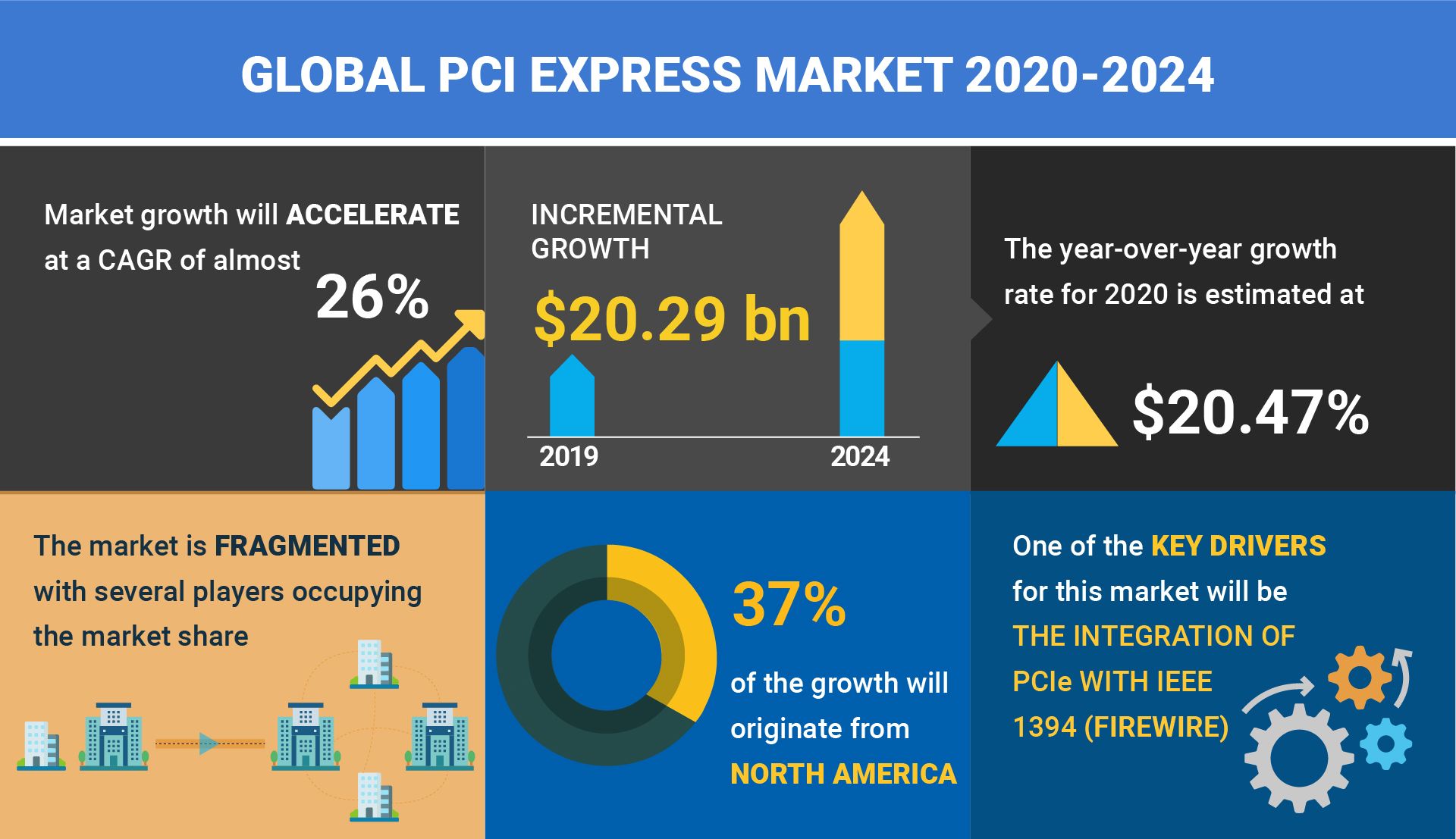
Latest PCIe Market Growth Trends
PCIe technology has been the standard I/O interconnect along the whole compute continuum throughout its history, continuing to outperform rival I/O technologies in terms of market share, capacity, and bandwidth.
It is used across a variety of market areas, including handheld, client, servers, workstations, data centers, High-performance computing, automotive, embedded systems, industrial applications, etc.
In order to better understand how PCIe is being used in different organizations and the most recent technological developments, Logic Fruit Technologies often conducts polls on LinkedIn.
The findings of these polls will be discussed, and we’ll also go into the various facets of PCIe growth, in this blog post.
Key Factors Fueling the Expansion of the PCIe Trends:
The growth of the high-performance computing device market, the expansion of data center infrastructure, and the widespread adoption of cutting-edge technologies like AI and ML are all contributing to the PCIe market’s explosion.
These aspects highlight how crucial PCIe is for facilitating quicker data transfer and effective communication within computing systems.
The majority of respondents to the poll 64% identified high-performance computing device demand as the main engine of PCIe market expansion. Furthermore, 16% pointed to the deployment of advanced technologies as the reason for the growth and highlighted PCIe’s function in enabling AI and ML requirements.
The expansion of data center infrastructure was cited as a significant cause by a sizeable portion of 12%, who also acknowledged PCIe’s improved data processing and storage capabilities. Last but not least, 8% of respondents noted the increase in data traffic, underscoring PCIe’s significance for effective data transfer within systems confronting rising data demands.
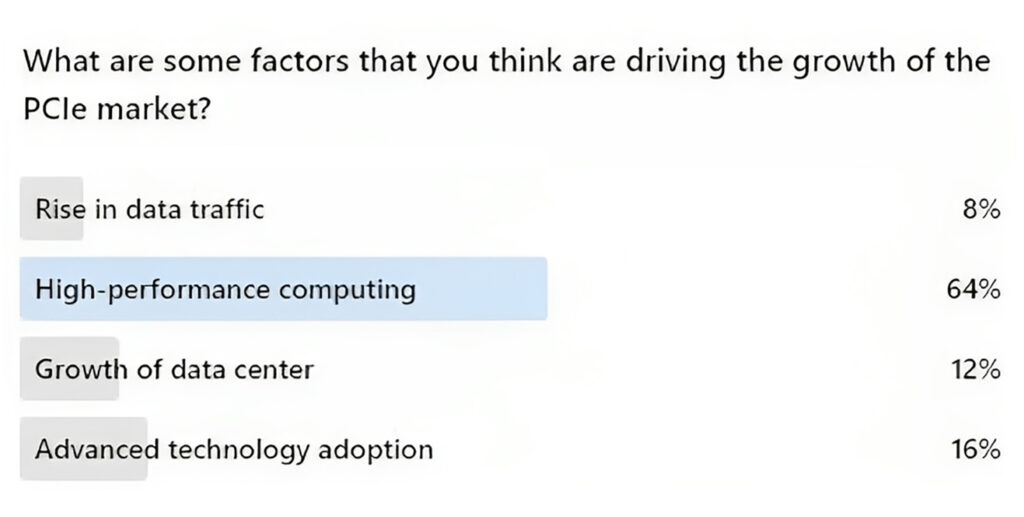
Source: Logic Fruit’s LinkedIn
Challenges in Implementing PCIe Protocol
There are a number of difficult factors in implementing the PCIe protocol. The establishment of dependable communication links, error handling and recovery, power management to maximize energy use, and managing interrupt handling and messaging, which ensures effective communication between PCIe devices and the host system, are a few of the major challenges.
To build strong and effective PCIe implementations, each of these requirements necessitates close attention to detail and a thorough comprehension of the protocol’s complexities.
The PCIe (Peripheral Component Interconnect Express) protocol implementation issues were recently asked about in our poll. According to the results, a sizeable percentage of those surveyed 44% said that Link Training and Initialization was the most difficult part of implementing PCIe.
Error Handling and Recovery was in second place with 26%, and Power Management was cited as a problem by 22% of participants. Interrupt Handling and Messaging was the part that 7% of respondents considered to be the most difficult.

Source: Logic Fruit’s LinkedIn
Solutions for Extending PCIe Connections Over Long Distances
Ultra-low loss PCBs, low-loss cables (like MCIO or M-XIO), and active parts like redrivers and retimers are solutions for extending PCIe connections over greater distances. These approaches preserve signal quality, enabling dependable data transport for a range of applications.
Retimers had the highest support in the poll results 42%, demonstrating their appeal for signal amplification and regeneration in long-distance PCIe connections. Following closely with 38% of the vote, PCIe low-loss connections like MCIO or M-XIO were found to be effective at maintaining signal integrity over long distances.
It’s interesting that 17% of the votes went to Redriver as well, perhaps because of some misunderstanding. With 4% support, ultra-low loss PCBs were less popular in this survey but were still a viable alternative for some use cases.
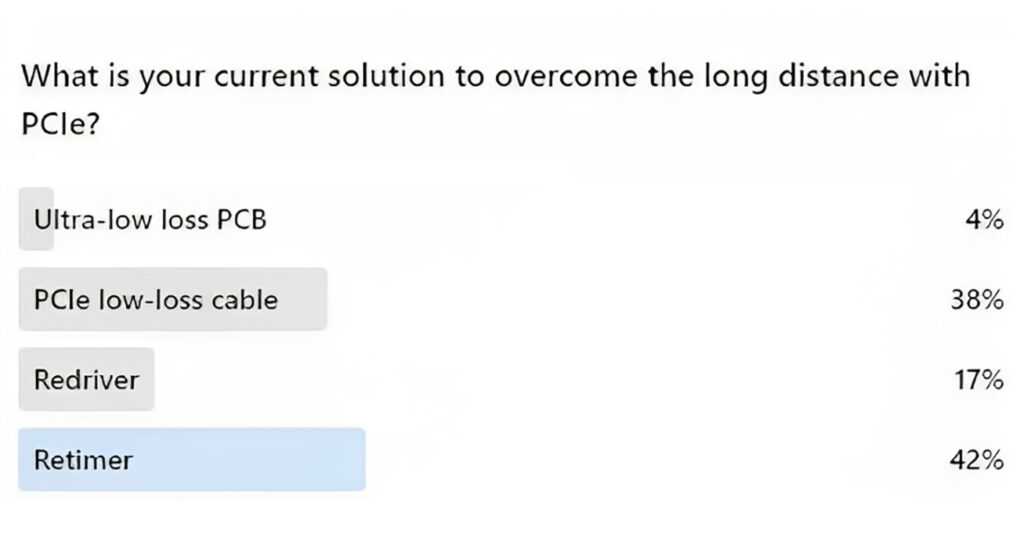
Source: Logic Fruit’s LinkedIn
Regional Leadership in the PCIe Market
With its significant concentration of semiconductor companies and technological pioneers, North America dominates the PCIe market.
Asia-Pacific, particularly China and Taiwan, follows closely behind. Europe makes a smaller but nonetheless significant contribution to the market.
There is little involvement in South America, the Middle East, or Africa. As the industry develops, regional importance may alter over time.
According to the poll results, Asia-Pacific is currently leading the PCIe market with 48% of the votes, closely followed by North America at 35%. South America comes in last with 6%, while Europe comes in at 10%. These findings highlight Asia-Pacific’s dominance in the PCIe market, particularly in China and Taiwan, with North America also playing a vital role in innovation and technological advancement.
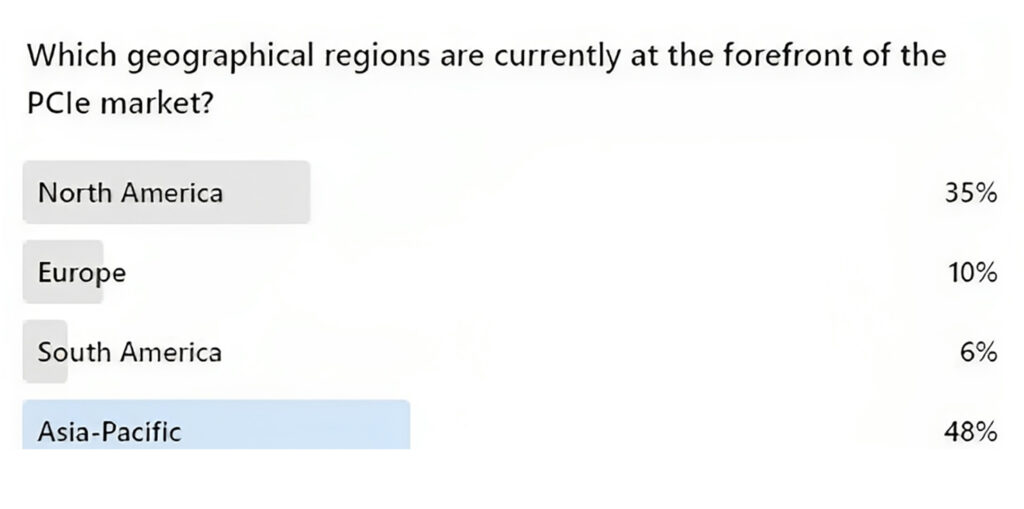
Source: Logic Fruit’s LinkedIn
User Priorities in PCIe Technology
When compared to earlier standards, PCIe (Peripheral Component Interconnect Express) stands out for its greater performance and scalability.
It boasts reduced latency, increased bandwidth capacity, and extraordinarily fast data rates. Consequently, PCIe has become the standard for modern computing, enabling quicker and more effective communication between hardware components, whether it be for gaming, data-intensive jobs, or high-speed storage solutions.
According to the poll’s findings, 35% of respondents appreciate High data speeds, 29% prefer Lower latency, 20% want Better performance and scaling, and 16% want PCIe technology to offer Larger bandwidth support. These choices highlight how critical it is for modern computing to have quick data transfers, minimal latency, adaptability, and data capacity.
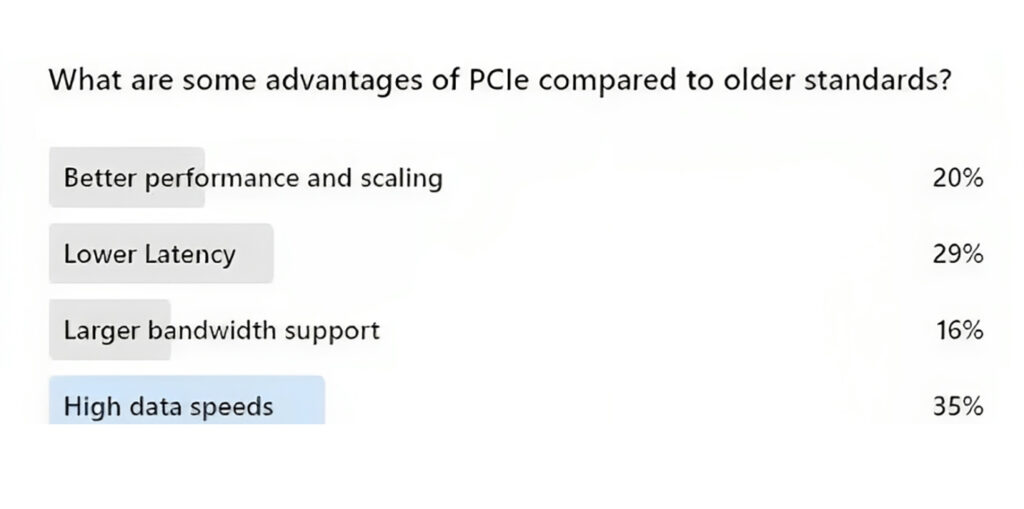
Source: Logic Fruit’s LinkedIn
Popular Uses of PCIe Technology
Due to its capability to enable quick and low-latency communication between components, PCIe, or Peripheral Component Interconnect Express, is frequently used for high-speed data transfer in applications like computer hardware (graphics cards, SSDs, NICs), industrial systems, data centers, and automotive technology (infotainment, ADAS).
According to the poll results, graphics cards are the PCIe application most frequently used, receiving 44% of the votes. The fact that high-performance peripherals are in second place with 32% of the market shows how crucial PCIe is to boosting a variety of hardware capabilities. Storage devices trail behind at 6%, demonstrating their relatively lesser reliance on PCIe for connectivity and data transfer within systems, while network interface cards have an 18% share, emphasizing their relevance in data transmission.
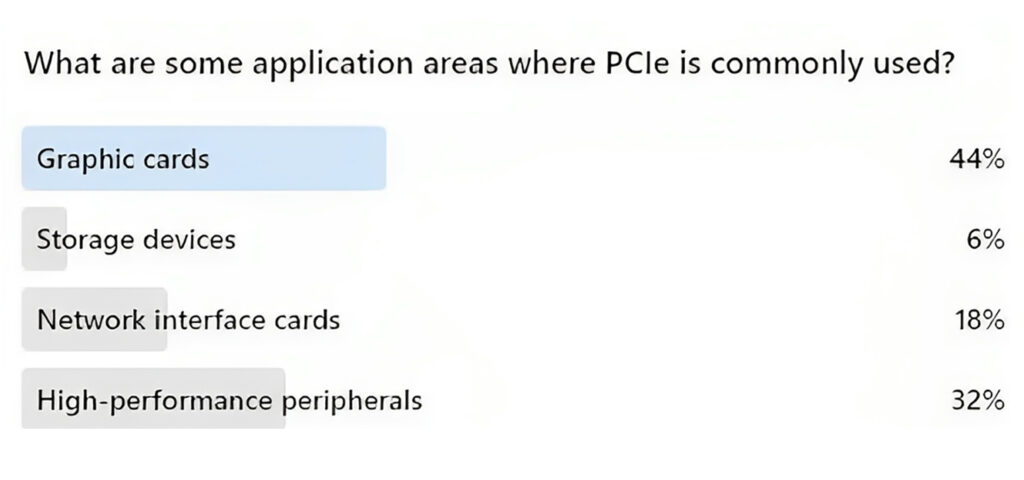
Source: Logic Fruit’s LinkedIn
Navigating Complexities in the PCIe Market
The crucial phases of complicated engineering projects are design, implementation, and verification, each of which has its own set of difficulties.
To achieve effective outcomes, it is also necessary to handle a number of additional aspects throughout the project lifecycle, such as regulatory compliance and unforeseen technological challenges.
The results of the poll show that verification complexities are the main issue, receiving 63% of the votes, closely followed by designing and implementation, each receiving 16%. The remaining 5% highlight the importance of additional project-related difficulties.
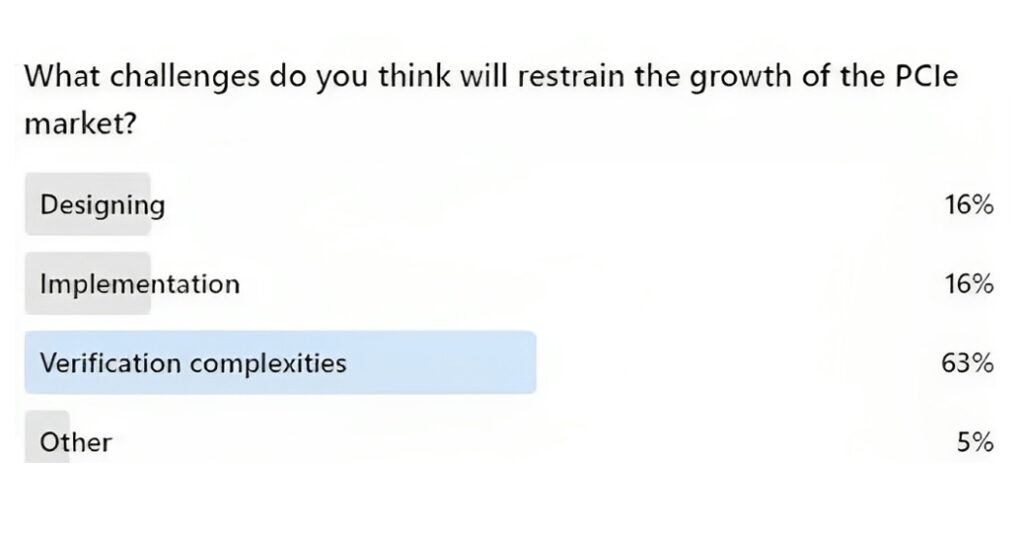
Source: Logic Fruit’s LinkedIn
Conclusion:
Our LinkedIn polls on PCIe technology have offered insightful information about a variety of PCIe market factors. We now know that PCIe is increasingly being used globally, and yet for consumers, negotiating its complexity continues to be quite difficult.
While customer priorities place an emphasis on the need for reliability and performance, popular implementations of PCIe technology highlight its versatility.
Although it can be difficult to extend PCIe connections over vast distances, alternatives are starting to emerge. The PCIe protocol’s implementation has its own unique set of difficulties that must be carefully taken into account.
In conclusion, PCIe technology continues to be a vital and active part of contemporary computing and communication solutions.
Businesses and people can use it to drive innovation and efficiency across numerous industries as they continue to adapt to changing demands.







